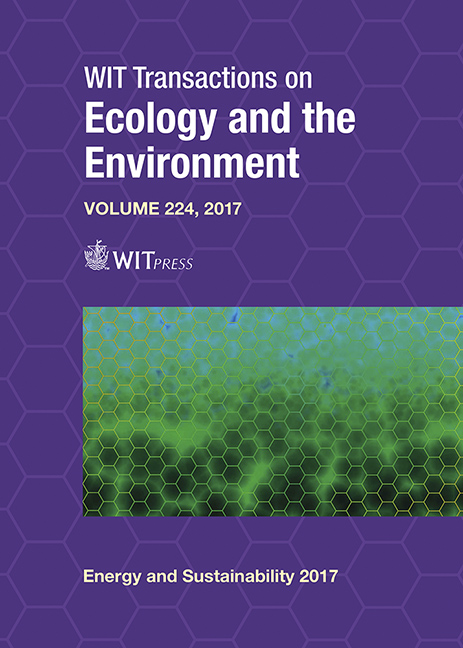DESIGN OF A NOVEL PHOTOELECTROCHEMICAL REACTOR FOR HYDROGEN PRODUCTION
Price
Free (open access)
Transaction
Volume
224
Pages
13
Page Range
349 - 361
Published
2017
Paper DOI
10.2495/ESUS170331
Copyright
WIT Press
Author(s)
FRANCIS N. NJOKA, MAHMOUD A. AHMED, SHINICHI OOKAWARA
Abstract
Photoelectrochemical hydrogen production is one promising way of producing hydrogen without emitting carbon dioxide into the atmosphere. Many semiconductor materials have been investigated over the past four decades although with huge financial constraints on experimental work to many research groups hindering faster research progress. In this paper, a numerical approach characterising the transport phenomena including reaction kinetics at the semiconductor-electrolyte interface is presented to facilitate a better understanding of the reactor with the aim of minimising the associated cost implications. The input photocurrent density is empirically evaluated from the standard reference solar spectra ASTM G173-03 using hematite as the semiconductor material of interest combined with other potential photoelectrodes. Charge transport and electrochemical kinetics in the two electrolyte chambers of a 2-D photoelectrochemical reactor model are simulated using Nernst Planck’s and Butler Volmer equations respectively. Pure water (pH neutral) is used as the electrolyte in the model. An ion-permeable membrane is also included in the simulations to isolate the reaction products which would otherwise result in product losses and pose danger under normal operations of the reactor. Despite the slow dissociation rate of water, progress in dissociation and the proton movement from the anolyte to the catholyte were clearly noticed. The evolution of hydrogen and oxygen from the cathode and anode surfaces respectively are also reported. Gas concentration seem to appear close to the electrode surfaces where the reactions occur with the high concentration band progressively widening with the reactor height. Results also show that the ratio of increment in hydrogen concentration doubled that of oxygen which affirms the equilibrium reaction of water splitting. Increase in the photocurrent density also results in increased gas production. These results provide an impetus for further investigations on the behaviour of the reactor to inform future research work.
Keywords
electrokinetics, practical PEC reactor design, simulation, species transport





